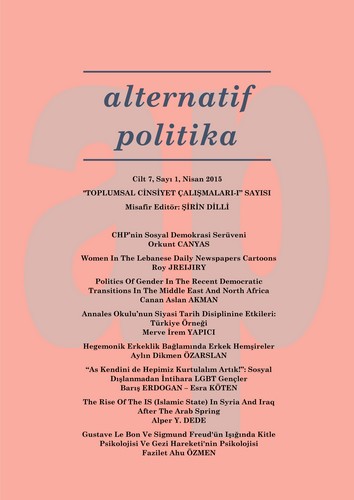The Rise of the IS (Islamic State) in Syria and Iraq after ahe Arab Spring
The Rise of the IS (Islamic State) in Syria and Iraq after ahe Arab Spring
Author(s): Alper Y. DedeSubject(s): International relations/trade, Developing nations, Studies in violence and power, Sociology of Politics, Peace and Conflict Studies
Published by: Rasim Özgür DÖNMEZ
Keywords: The Arab Spring; the IS (Islamic State); Abu Mus’ab Al-Zarqawi; Abu Bakr Al-Baghdadi; Turkish Foreign Policy on the Middle East; American Foreign Policy on the Middle East;
Summary/Abstract: The Arab Spring is a social movement triggered by a complex set of social, political and economic factors. Despite the initial success of the Arab Spring in ousting some of the bureaucratic-authoritarian status-quo oriented regimes, mass mobilization of people could not oust all dictatorships and introduce meaningful reforms toward more democratization in the region. Worse, the mass protests that started as part of the Arab Spring later deteriorated into utter chaos and even civil war in some parts of the region. With the disappearance of state authority in those places, sub-state actors gained ground, challenging the stability and order that were once provided by authoritarian regimes through coercion. The IS’s sudden expansion has mainly resulted from large scale instability in Iraq and Syria and the disappearance of nation-state borders between the two states. The IS, which emerged as a sub-state actor, is currently in the process of becoming a proto state. Thus, this paper has two simultaneous research goals. The first is to establish the link between lack of institutionalization of the Arab Spring and its failure to bring about positive and meaningful political change in the region with the power vacuum created in the region and subsequent emergence of sub-state actors and groups like the Al- Qaeda in Iraq and the IS (Islamic State) in Iraq and Syria. The second is to study and evaluate the emergence and growth of the IS in conjunction with the deteriorating security situation in Iraq and Syria, and how the international involvement with the IS might have shaped the tactics and the course of action that the IS has taken since the IS captured the city of Mosul in June 2014, shocking the whole world. Assessment of the IS’s military, economic and political prospects will also be provided in the concluding section.
Journal: Alternatif Politika
- Issue Year: 7/2015
- Issue No: 1
- Page Range: 168-182
- Page Count: 15
- Language: English

